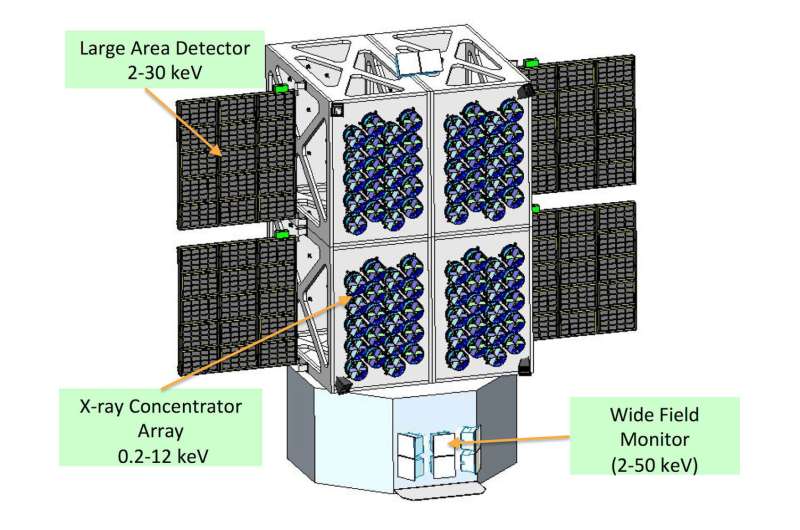Professor leads science study for new space-based observatory concept

After two years of intensive work, led by the U.S. Naval Research Laboratory's (NRL) Space Science Division, the design for a conceptual space-based observatory is headed to the National Academies of Science, Engineering and Medicine's Decadal Survey on Astronomy and Astrophysics, which establishes the astronomy community's priorities for the next decade.
For Texas Tech University's Tom Maccarone, who played an integral role in the observatory's development over the last two years, now begins an equally important chapter – ensuring that key decision makers understand its importance.
The Spectroscopic Time-Resolving Observatory for Broadband Energy X-rays (STROBE-X) is a mission concept for an X-ray observatory that will specialize in rapid time variability. The satellite would gather information from black holes, neutron stars, transient events and cosmic explosions such as the violent destruction of stars in the grip of black holes and binary neutron star collisions. The estimated cost to build the observatory is $880 million.
"We hope the Decadal Survey will specifically say that STROBE-X should be done," said Maccarone, a Presidential Research Excellence Professor in the Texas Tech Department of Physics & Astronomy. "But even if they just say that high-collecting-area X-ray timing and spectroscopy are important, we should have a good chance to have our mission fly."
Paul Ray, an astronomer with NRL's High Energy Astrophysics and Applications section, led the study for the STROBE-X mission concept.
"The physical conditions in exotic systems like black holes and neutron stars are impossible to recreate in any earthbound laboratory," Ray said. "So, a mission like this is the best way to expand our understanding."
The STROBE-X mission concept calls for an agile 5,000-kilogram satellite with a wide field monitor to detect and localize transient events and monitor the state of variable sources. These observations would trigger the satellite to train its huge, primary instruments onto an object of interest. It also would respond to notifications from ground-based observatories.
The primary instruments would have more than 10 times the collecting area of previous X-ray instruments – technology made possible by the latest advances in solid state X-ray detectors and lightweight X-ray concentrating optics. Measurements with these instruments can determine the spin of black holes, the radius of neutron stars and the elements created in explosive events.
Maccarone led the development of the STROBE-X science case during the mission study. He predicts that in the 2020s many new facilities will survey the sky routinely at different wavelengths, looking for transient and variable sources.
He said this represents a shift from traditional astronomy, with an emphasis on very deep observations of individual objects, to big data science.
"STROBE-X, with its wide-field X-ray monitoring and rapid response, will be a critical capability in the era of time-domain astronomy," Maccarone said.
The technology for the primary instrument on STROBE-X already is being demonstrated by the Neutron Star Interior Composition Explorer, a payload attached to the International Space Station since 2017.
According to Colleen Wilson-Hodge, a member of the study team at NASA's Marshall Space Flight Center, STROBE-X would be a vital tool in the age of multi-messenger astrophysics.
"Throughout history we have learned about the stars by looking at the light from them – first visually, then with wavelengths ranging from radio waves to gamma rays," she said. "The recent development of gravitational wave and neutrino detectors has expanded astronomy beyond just electromagnetic waves. STROBE-X would provide the electromagnetic context for those phenomena."
The STROBE-X study was funded by NASA and conducted by scientists and engineers at NRL, Texas Tech, Massachusetts Institute of Technology, NASA's Marshall Space Flight Center and NASA's Goddard Space Flight Center.
The funded participants were supported by a collaboration of more than 130 scientists from numerous U.S. and international institutions who helped develop and refine the scientific case for the mission.
The STROBE-X study also benefited from ongoing collaboration with European scientists from Italy, Spain, Denmark and the United Kingdom, who developed the detector technology and designs for two of the instruments as part of a European Space Agency study of a mission called the Large Observatory For X-ray Timing, or LOFT.
Provided by Texas Tech University





















